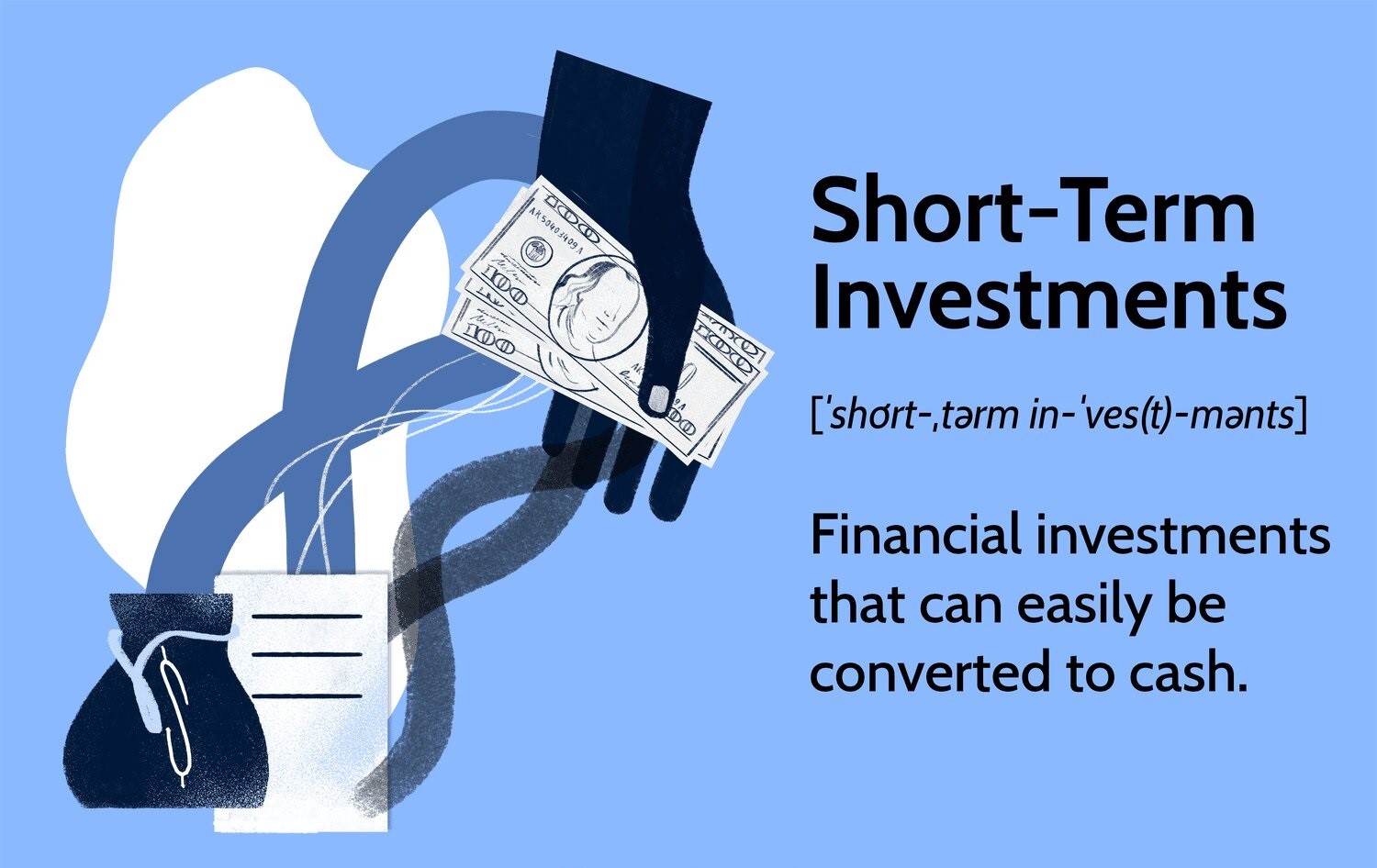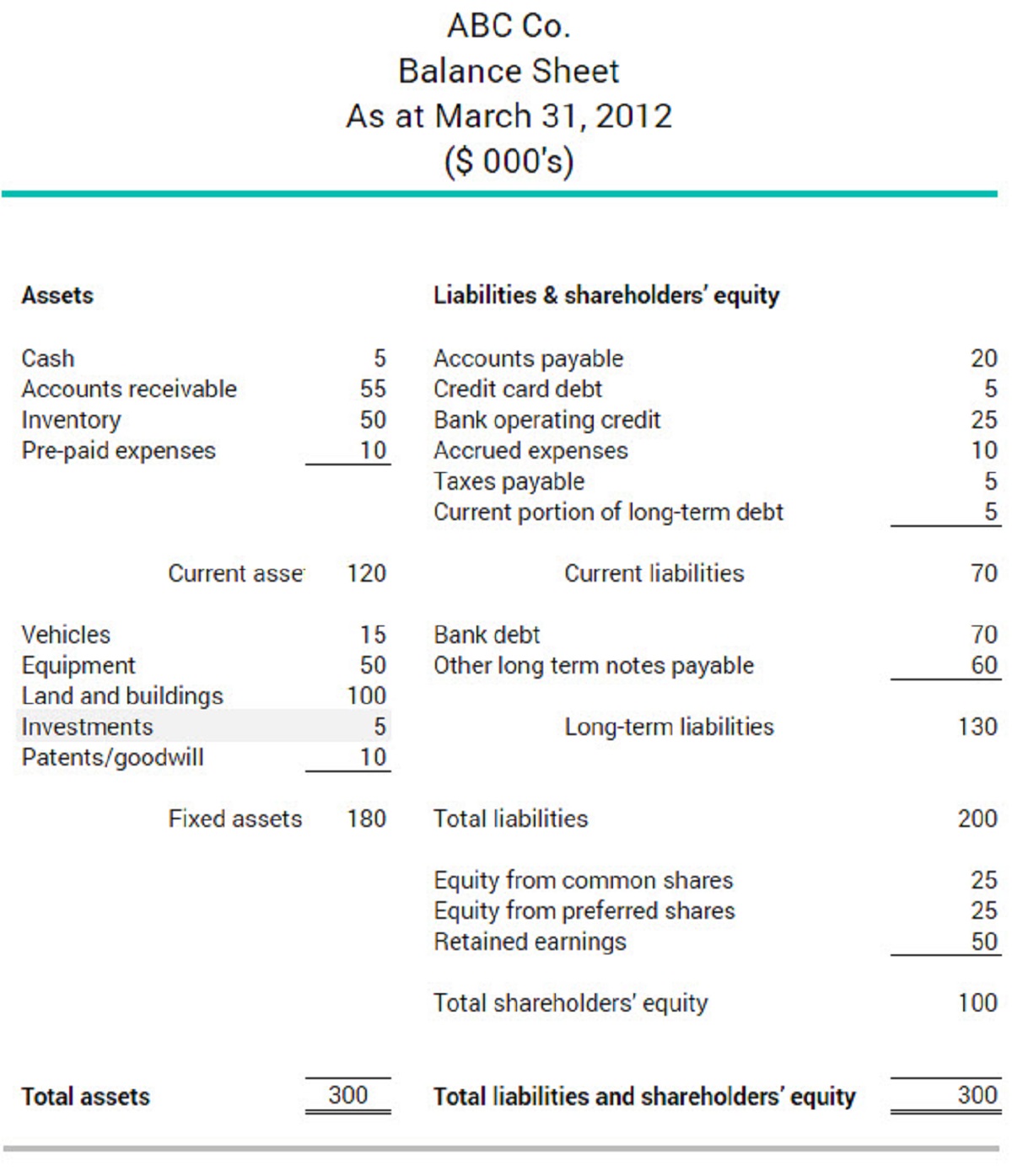Introduction
When it comes to investing, there are numerous options available for individuals looking to grow their wealth. While long-term investments such as stocks and real estate are popular choices, they might not be suitable for everyone. Some investors may prefer a more short-term approach, where they can have access to their funds within a shorter time frame.
Short-term investments are beneficial for individuals who have a specific financial goal in mind, such as saving for a down payment on a house or building an emergency fund. These investment options offer relatively low risk and provide the opportunity to grow your money over a shorter period.
In this article, we will explore the concept of short-term investments, the reasons why you might consider them, and the factors to consider when choosing the right investment option for your needs. We will also discuss some of the most popular types of short-term investments available in the market today.
It’s important to note that short-term investments are not designed for investors seeking high returns in a short time. Instead, they serve the purpose of preserving capital and providing a modest return within a shorter duration. Now, let’s delve deeper into the world of short-term investments and discover the potential opportunities they offer.
Understanding Short-Term Investments
Short-term investments are financial instruments or assets that are designed to be held for a relatively brief period, typically one year or less. Unlike long-term investments, which may involve tying up funds for years or even decades, short-term investments provide more liquidity and flexibility.
One of the key characteristics of short-term investments is their lower level of risk compared to long-term investments. While all investments come with some level of risk, short-term investments generally carry less market volatility and lower exposure to potential fluctuations. This makes them an attractive option for individuals who prioritize capital preservation and need quick access to their funds.
Another important aspect of short-term investments is that they often offer a fixed or predictable return. These investments typically provide a steady income stream or a fixed maturity date, which allows investors to plan their financial goals accordingly. This predictability can be particularly beneficial for those who have short-term financial commitments or need to meet specific financial milestones within a defined time frame.
Short-term investments can take various forms, such as certificates of deposit (CDs), treasury bills, money market funds, and high-yield savings accounts. The suitability of these options depends on factors such as an individual’s risk tolerance, investment goals, and time horizon.
It’s important to note that while short-term investments offer advantages like liquidity and lower risk, they may also come with relatively lower returns compared to long-term investments. Investors should carefully consider their financial objectives and risk tolerance before allocating their funds into short-term investment vehicles.
Understanding the nature of short-term investments is crucial in order to make informed financial decisions. By recognizing their characteristics and benefits, individuals can better navigate the investment landscape and choose the most appropriate options to meet their short-term financial goals.
Why Invest in Short-Term Investments?
There are several compelling reasons why individuals choose to invest in short-term investments. Let’s explore some of the key advantages:
1. Liquidity: Short-term investments offer high liquidity, meaning that you can easily access your funds when needed. This is particularly important if you have a short-term financial goal or unexpected expenses that may arise.
2. Capital Preservation: Short-term investments generally carry lower risk compared to long-term investments. By investing in low-risk assets, you can better protect your capital from potential market fluctuations.
3. Flexibility: Short-term investments provide flexibility as they offer various options with different terms and conditions. You can choose an investment option that aligns with your specific needs, whether it’s a few months or a year.
4. Steady Income: Short-term investments often provide a regular income stream in the form of interest or dividends. This can be beneficial if you are looking for a steady source of income or if you want to supplement your existing cash flow.
5. Opportunity for Diversification: Short-term investments allow you to diversify your portfolio and reduce overall risk. By spreading your investments across different asset classes, you can minimize the impact of any single investment’s performance on your overall portfolio.
6. Lower Volatility: Short-term investments typically experience less price volatility compared to long-term investments. This can provide investors with a sense of stability and peace of mind, knowing that their investments are less likely to suffer from significant market fluctuations.
7. Capitalize on Investment Opportunities: Short-term investments provide the flexibility to take advantage of market opportunities. If you believe that certain investments or sectors will perform well in the short term, you can allocate your funds accordingly and potentially benefit from favorable market conditions.
While short-term investments may not offer the same potential for long-term capital growth as some other investment options, they do provide a range of advantages that make them attractive to investors with specific financial goals and needs. By considering these benefits, you can determine if short-term investments align with your investment strategy and financial objectives.
Factors to Consider When Choosing Short-Term Investments
When it comes to selecting the right short-term investments, there are several important factors to consider. These factors can help you make informed decisions that align with your financial goals and risk tolerance. Let’s explore some key factors:
1. Time Horizon: Consider the length of time you can commit to your investment. Different short-term investments have varying maturity periods ranging from a few months to a year. Assess your financial goals and choose an investment term that suits your needs.
2. Risk Tolerance: Evaluate your comfort level with risk. Some short-term investments, such as treasury bills or high-yield savings accounts, carry lower risk compared to others like peer-to-peer lending or corporate bonds. Understand the potential risks associated with each investment and choose accordingly.
3. Liquidity: Assess how quickly you may need access to your funds. Certain short-term investments, such as savings accounts or money market funds, offer high liquidity, while others may have restrictions on withdrawals. Consider your financial circumstances and choose an investment option that provides the necessary level of liquidity.
4. Return on Investment: While short-term investments are generally considered low-risk, they may have varying returns. Compare the interest rates, yields, or potential returns offered by different investment options. A higher return may come with increased risk, so it is essential to strike a balance between return and risk.
5. Investment Amount: Determine the amount of capital you are comfortable investing. Some short-term investments require a minimum initial investment, while others do not. Assess your financial situation and select an investment option that fits within your budget.
6. Tax Implications: Consider the tax implications of your short-term investments. Interest earned from certain investments may be subject to applicable taxes. Understand the tax rules and consult with a financial advisor or tax professional to ensure you make the most tax-efficient investment decisions.
7. Market Conditions: Stay informed about prevailing market conditions and economic factors. While short-term investments are designed to reduce exposure to market fluctuations, external factors might have an impact on certain investment options. Stay updated and choose investments that are suitable for the prevailing economic landscape.
By considering these factors, you can make well-informed decisions when selecting short-term investments. Take the time to assess your financial objectives, risk tolerance, and investment preferences to determine the best options that align with your needs and can help you achieve your financial goals.
Types of Short-Term Investments
Short-term investments offer a variety of options for individuals looking to grow their money within a relatively short time frame. Let’s explore some of the most popular types of short-term investments:
1. Certificate of Deposit (CD): CDs are time deposits offered by banks and credit unions. They have a fixed maturity date and offer a predetermined interest rate. CDs usually range from a few months to a year, making them suitable for short-term investment goals.
2. Treasury Bills: Also known as T-bills, these are short-term government bonds with a maturity period of one year or less. T-bills are considered low-risk investments and are backed by the U.S. Treasury. They are typically sold at a discount and pay face value at maturity.
3. Money Market Funds: Money market funds invest in short-term debt securities such as treasury bills, commercial papers, and certificates of deposit. They provide high liquidity and aim to maintain a stable value of $1 per share. Money market funds are suitable for investors looking for stability and easy access to their funds.
4. High-Yield Savings Accounts: High-yield savings accounts are offered by banks and online financial institutions. These accounts provide a competitive interest rate on your deposits and offer greater flexibility compared to other short-term investments. They are an excellent option for individuals looking to earn a higher return on their cash savings.
5. Peer-to-Peer Lending: Peer-to-peer lending platforms connect borrowers and lenders, allowing individuals to lend money to others in exchange for interest payments. These platforms offer short-term lending options with varying risk levels and returns. Investors can diversify their investments across multiple loans to manage risk.
6. Short-Term Bond Funds: Short-term bond funds invest in fixed-income securities with short maturities. These funds provide diversification across various bonds, including government and corporate bonds. Short-term bond funds offer stable income and potential capital appreciation with relatively lower risk compared to long-term bond funds.
7. Corporate Bonds: Corporate bonds are debt securities issued by companies to raise capital. Short-term corporate bonds have a maturity period of one to five years. They offer higher yields compared to government bonds but come with a higher level of risk. Investing in corporate bonds requires careful analysis of the creditworthiness of the issuing company.
8. Municipal Bonds: Municipal bonds, also known as munis, are issued by state or local governments to fund public projects. Short-term municipal bonds typically have a maturity period of one to three years. They offer tax advantages and lower default risk compared to corporate bonds.
9. Municipal Bond Funds: Municipal bond funds invest in a portfolio of municipal bonds. These funds provide diversification and professional management. They offer a steady income stream and potential tax advantages for investors in higher tax brackets.
10. Treasury Inflation-Protected Securities (TIPS): TIPS are treasury securities that protect against inflation. These bonds have a fixed interest rate but the principal value adjusts with changes in the Consumer Price Index (CPI). TIPS are considered low-risk investments and can provide a hedge against inflation over the short term.
Each type of short-term investment offers unique features, risk profiles, and potential returns. It is important to assess your investment goals, risk tolerance, and liquidity needs to determine which short-term investment option aligns best with your financial objectives.
Certificate of Deposit (CD)
Certificates of Deposit (CDs) are a popular type of short-term investment that offers a fixed interest rate and a predetermined maturity date. CDs are typically offered by banks and credit unions and provide a safe and secure way to grow your money over a specific period.
CDs involve depositing a specific amount of money with a financial institution for a set period, ranging from a few months to several years. During this time, the funds are locked in, and you are unable to access them without incurring a penalty. In return for keeping your money with the institution for the agreed-upon term, you receive a fixed interest rate that is typically higher than regular savings accounts.
The interest rate on CDs depends on several factors, including the length of the term and prevailing market conditions. Generally, longer-term CDs offer higher interest rates due to the longer commitment of funds. CD interest can be paid at different intervals, such as monthly, quarterly, or upon maturity. The interest earned is typically taxed as ordinary income.
The main advantages of investing in CDs are capital preservation and a guaranteed return. Unlike other investment options, CDs offer a fixed interest rate and are backed by FDIC insurance (up to $250,000 per depositor in each bank). This means that even if the financial institution fails, your investment is protected.
One consideration when investing in CDs is the tradeoff between the term length and the interest rate. Longer-term CDs generally offer higher interest rates but also tie up your funds for a more extended period. Shorter-term CDs, on the other hand, provide more liquidity but typically offer lower interest rates. Assess your financial goals and liquidity needs to determine the most suitable term for your investment.
CDs are an ideal investment option for individuals looking to preserve their capital and have a specific financial goal in mind. They can be used for short-term goals, such as saving for a down payment on a home or a future expense that you plan to meet within a specific timeframe.
Before investing in a CD, it is advisable to shop around and compare rates, terms, and minimum deposit requirements from different financial institutions. Consider the reputation and stability of the bank or credit union offering the CD and review the terms and conditions carefully to understand any penalties or fees associated with early withdrawal.
Overall, certificates of deposit present a straightforward and secure investment vehicle for individuals seeking a predictable return and a short-term investment option.
Treasury Bills
Treasury bills, often referred to as T-bills, are short-term government bonds with maturities ranging from a few days to one year. They are considered one of the safest investments available in the market due to their backing by the full faith and credit of the U.S. government.
T-bills are issued by the U.S. Department of the Treasury to meet the government’s short-term funding needs. They are sold at a discount to their face value and do not pay periodic interest payments like traditional bonds. Instead, investors earn interest by purchasing the T-bill at a discount and receiving the full face value at maturity.
One of the primary advantages of investing in T-bills is their low-risk nature. Since they are backed by the U.S. government, the default risk is essentially non-existent. This makes T-bills an attractive option for investors seeking capital preservation and a stable return.
Another benefit of T-bills is their high liquidity. They are highly marketable and can be bought or sold in the secondary market before their maturity date. This allows investors to access their funds quickly if needed, making T-bills a flexible short-term investment option.
Investing in T-bills is relatively straightforward. They are typically sold in denominations of $1,000, with a minimum investment requirement set by the U.S. Treasury. Investors can purchase T-bills directly through TreasuryDirect, the U.S. Treasury’s online platform, or through a financial institution.
When considering investing in T-bills, it’s essential to understand the relationship between the length of the maturity and the interest rate. Generally, longer-term T-bills offer higher interest rates than shorter-term ones. This is because investors demand greater compensation for tying up their funds for a more extended period.
T-bills are often favored by investors who prioritize capital preservation, low risk, and liquidity. They can be an ideal choice for individuals looking to park their funds temporarily while earning a modest return.
While T-bills offer numerous advantages, it’s important to note that they may not be suitable for investors seeking substantial growth or higher returns. The interest earned on T-bills is subject to federal taxes but exempt from state and local taxes, making them tax-efficient for certain investors.
Before purchasing T-bills, investors should familiarize themselves with the auction process and understand how to place bids. Additionally, monitoring current interest rates and market conditions can help investors make informed decisions about when to invest in T-bills.
Overall, treasury bills provide a low-risk, highly liquid, and government-backed investment option for individuals seeking a short-term investment vehicle that prioritizes capital preservation.
Money Market Funds
Money market funds are a type of short-term investment that offers individuals a way to invest in low-risk securities while maintaining high liquidity. These funds invest in highly liquid, low-risk instruments such as treasury bills, commercial papers, and certificates of deposit, making them suitable for conservative investors looking to preserve their capital.
Money market funds aim to provide stability and preserve the value of an investor’s initial investment by maintaining a stable net asset value (NAV) of $1. This means that the value of each share in the fund remains constant, regardless of market fluctuations. Investors earn income through the interest generated by the underlying securities held by the fund.
One of the key advantages of money market funds is their high level of liquidity. Investors can typically buy or sell shares of these funds on any business day with immediate access to their funds. This makes money market funds an attractive option for individuals who require quick and easy access to their investments without incurring penalties or fees.
Additionally, money market funds are considered relatively safe investments due to the strict regulations that govern their operations. These regulations impose restrictions on the types of securities the funds can invest in, requiring them to invest in high-quality, short-term instruments with minimal credit risk.
Money market funds are available through various financial institutions, including banks, mutual fund companies, and brokerage firms. Investors can choose between taxable and tax-exempt money market funds, with the latter offering potential tax advantages for investors in higher tax brackets.
It’s important to note that while money market funds are low-risk investments, they are not entirely risk-free. Although rare, money market fund investments can still experience a small decline in value known as “breaking a buck” if the underlying securities default. However, regulatory measures have been put in place to minimize the likelihood of such events and protect investors.
Investing in money market funds requires careful consideration of factors such as expense ratios, minimum investment requirements, and the reputation and track record of the fund manager. It’s essential to review the prospectus or offering documents of the fund to understand its investment objective, fees, and potential risks.
Money market funds are suitable for individuals who prioritize capital preservation, liquidity, and stability. They offer a conservative investment option for short-term cash management or as a temporary parking place for funds while seeking other investment opportunities.
By providing a balance between low-risk investments and high liquidity, money market funds serve as an attractive option for investors looking for stability and easy access to their funds.
High-Yield Savings Accounts
High-yield savings accounts are a type of short-term investment vehicle offered by banks and online financial institutions. They allow individuals to earn a higher interest rate on their savings compared to traditional savings accounts, making them an attractive option for individuals looking to grow their money over a shorter time frame.
One of the primary advantages of high-yield savings accounts is the higher interest rates they offer. These accounts typically provide significantly higher rates of return compared to standard savings accounts, allowing individuals to maximize their savings and accumulate interest over time.
High-yield savings accounts work similarly to regular savings accounts but with enhanced earning potential. The funds deposited in these accounts are safe and insured up to the maximum limit allowed by the Federal Deposit Insurance Corporation (FDIC). This provides peace of mind to investors who prioritize the security of their funds.
One key feature of high-yield savings accounts is the flexibility they offer. Unlike some other short-term investments, these accounts provide easy access to funds when needed. Individuals can deposit and withdraw money at any time without incurring penalties or fees, making high-yield savings accounts a convenient option for short-term financial goals or emergency funds.
Opening a high-yield savings account is typically straightforward. Many banks and online financial institutions offer these accounts with low minimum deposit requirements. Individuals can easily open an account online or visit a branch location to get started.
When considering a high-yield savings account, it’s important to compare interest rates, fees, and any requirements that may affect the account’s earning potential. Some high-yield savings accounts may have minimum balance requirements or tiered interest rates based on the account balance.
Another important consideration is the impact of inflation on the purchasing power of the savings. While high-yield savings accounts provide a higher interest rate compared to traditional savings accounts, it’s crucial to consider the rate of inflation and whether the account’s returns will outpace the erosion of purchasing power over time.
Overall, high-yield savings accounts are a convenient and low-risk investment option for individuals looking to earn a higher return on their savings over the short term. They provide opportunities for individuals to protect and grow their money while maintaining flexibility and easy access to funds.
Peer-to-Peer Lending
Peer-to-peer (P2P) lending, also known as social lending or crowdlending, has emerged as a popular form of short-term investment that connects borrowers and lenders directly through online platforms. This investment option allows individuals to lend money to others in exchange for interest payments, bypassing traditional financial institutions.
One of the key advantages of peer-to-peer lending is the potential to earn higher returns compared to traditional savings accounts or other conservative investments. The interest rates offered on P2P loans are often higher than those of traditional financial institutions, reflecting the higher level of risk associated with lending directly to individuals or small businesses.
P2P lending platforms provide investors with the opportunity to diversify their investments across different loans. Instead of lending a large sum to a single borrower, individuals can invest smaller amounts in multiple loans, spreading the risk across a portfolio of loans with varying terms and credit ratings.
Another benefit of peer-to-peer lending is the transparency it offers. P2P platforms provide detailed information about the borrowers, their credit scores, and the purpose of the loan. This allows investors to evaluate the risk associated with each loan and make informed investment decisions based on their risk tolerance.
Investing in P2P lending also provides individuals with the satisfaction of directly helping borrowers meet their financial goals. Many borrowers seek P2P loans for purposes such as debt consolidation, home improvements, or small business financing. By investing in these loans, investors become an integral part of the borrowing process and contribute to the success of these individuals or businesses.
However, it’s important to note that peer-to-peer lending carries certain risks. The loans are unsecured, meaning there is no collateral to back them up. As a result, there is a possibility of default or delayed repayment by borrowers. Investors should carefully assess the creditworthiness of borrowers and diversify their investments to minimize the impact of any potential defaults.
Before investing in P2P lending, individuals should research and select a reputable lending platform. It’s essential to review the platform’s policies, fees, and procedures for loan selection, as well as any investor protection mechanisms they may have in place.
Peer-to-peer lending offers an alternative avenue for individuals seeking short-term investment opportunities with potentially higher returns. By carefully selecting and diversifying loans, investors can participate in the lending process while earning an attractive yield on their capital.
Short-Term Bond Funds
Short-term bond funds are mutual funds or exchange-traded funds (ETFs) that invest in a portfolio of fixed-income securities with short maturities. These funds offer investors the opportunity to earn income and potentially achieve capital appreciation while maintaining a relatively low level of risk.
Short-term bond funds invest in a variety of debt securities, including government bonds, corporate bonds, and municipal bonds, with maturities typically ranging from one to three years. By focusing on shorter-term bonds, these funds aim to provide investors with regular interest income and some level of stability.
One of the primary advantages of investing in short-term bond funds is the potential for higher yields compared to traditional savings accounts or money market funds. These funds generally offer higher returns by investing in higher-yielding fixed-income instruments, such as corporate bonds or municipal bonds, while still maintaining a conservative approach.
Short-term bond funds also provide diversification benefits. By investing in a portfolio of bonds with varying issuers, credit ratings, and maturities, investors can spread their risk across different sectors and minimize the impact of any individual bond default or market fluctuations.
Additionally, short-term bond funds are actively managed by professional fund managers who carefully select the bonds in the portfolio. This expertise can be particularly valuable when navigating the bond market, assessing credit risk, and adjusting the portfolio’s composition based on market conditions and interest rate movements.
Investing in short-term bond funds offers investors a level of liquidity. While the underlying bonds may have longer maturities, investors can easily buy or sell shares in the fund on any business day. This liquidity makes short-term bond funds an attractive option for individuals seeking a short-term investment vehicle without compromising accessibility to their funds when needed.
It’s important to note that, like all investments, short-term bond funds come with certain risks. These risks include interest rate risk, credit risk, and the potential for changes in market conditions. Investors should carefully review the prospectus of the fund and understand the specific risks associated with the fund’s underlying bonds before making an investment.
Before investing in short-term bond funds, individuals should consider factors such as expense ratios, past performance, and the reputation and track record of the fund manager. Additionally, understanding the fund’s investment strategy, such as its target duration or average maturity, can provide insights into its risk level and potential returns.
Short-term bond funds can be suitable for investors seeking a balance between income generation and capital preservation. These funds offer a diversified approach to fixed-income investing and can be a useful tool in building a well-rounded investment portfolio.
Corporate Bonds
Corporate bonds are debt securities issued by corporations to raise capital for various purposes, such as funding investments or expansion projects. These bonds offer investors the opportunity to earn regular interest income while lending money to companies in exchange for a fixed repayment schedule.
Investing in corporate bonds can provide individuals with higher yields compared to government bonds or other low-risk investments. This higher yield reflects the additional risk associated with lending to corporations, as compared to lending to the government. The yield on corporate bonds is influenced by several factors, including the creditworthiness of the issuing company, prevailing market conditions, and interest rate levels.
Corporate bonds typically have a fixed maturity date, ranging from a few months to several years. During the bond’s term, investors receive periodic interest payments, usually on a quarterly or semi-annual basis. Upon maturity, the bondholder receives the principal amount they originally invested.
One of the benefits of investing in corporate bonds is the opportunity to diversify one’s fixed-income portfolio. Corporate bonds offer a range of options with varying credit ratings, enabling investors to choose bonds that align with their risk tolerance. Investment-grade corporate bonds offer lower yields but come with a lower risk of default, while high-yield or junk bonds provide higher yields but carry a higher risk of default.
Investors looking to invest in corporate bonds can choose to buy individual bonds through a broker or invest in corporate bond funds that provide exposure to a diversified portfolio of corporate bonds. Corporate bond funds are managed by professionals who analyze credit risk, select bonds, and actively manage the portfolio to optimize returns.
It’s important to note that corporate bonds are not risk-free investments. The credit quality of the issuing company impacts the probability of default. Higher-rated companies generally have lower default risk but offer lower yields. On the other hand, lower-rated companies may provide higher yields but come with a greater risk of default.
Before investing in corporate bonds, individuals should research and assess the creditworthiness of the issuing company. Credit ratings from reputable agencies, such as Moody’s, Standard & Poor’s, or Fitch, can provide insights into the credit risk associated with specific bonds. Additionally, monitoring the financial health and industry conditions of the issuing company can help investors make informed investment decisions.
Corporate bonds can be an attractive investment option for individuals seeking a balance between income generation and moderate risk. By carefully evaluating the creditworthiness of companies and diversifying across different issuers and sectors, investors can potentially earn higher yields while lending to established businesses.
Municipal Bonds
Municipal bonds, also known as munis, are debt securities issued by state or local governments, as well as government agencies, to finance public projects such as infrastructure improvements, schools, or hospitals. Investing in municipal bonds provides individuals with an opportunity to lend money to municipalities and earn income in the form of periodic interest payments.
One of the primary advantages of municipal bonds is the potential for tax advantages. Interest earned from most municipal bonds is generally exempt from federal income tax. In some cases, the interest may also be exempt from state and local taxes, particularly if the investor resides in the same state as the issuer. This tax-advantaged feature can make municipal bonds an attractive investment option, especially for individuals in higher tax brackets.
Municipal bonds offer varying yields depending on several factors, including the creditworthiness of the issuing municipality, the term length of the bond, and prevailing market conditions. Generally, bonds from municipalities with higher credit ratings provide lower yields but come with lower default risk, while bonds from lower-rated municipalities offer higher yields to compensate for the increased risk.
Investing in municipal bonds provides individuals with an opportunity to support local infrastructure development and government projects. These bonds fund important initiatives that benefit the community, such as building schools, improving transportation systems, or constructing public facilities. Investors can feel a sense of pride knowing that their investment contributes to the betterment of their local area.
Similar to other bonds, municipal bonds have a fixed maturity date, typically ranging from a few months to several decades. During the bond’s term, investors receive periodic interest payments, usually on a semi-annual basis. Upon maturity, investors receive the principal amount they initially invested.
It’s important to note that municipal bonds are not risk-free investments. While the default risk varies depending on the creditworthiness of the issuing municipality, there is still a possibility of default. Investors should carefully analyze the credit ratings of the municipal bonds they consider and be aware of any potential factors that may affect the issuer’s ability to repay the bond’s principal and interest.
Municipal bonds can be purchased individually through a broker or by investing in municipal bond funds. Municipal bond funds enable investors to gain exposure to a diversified portfolio of municipals bonds managed by professionals who actively monitor creditworthiness, interest rate environments, and market conditions.
Before investing in municipal bonds, individuals should conduct thorough research on the issuing municipality. Consider factors such as its financial health, economic stability, and local government policies. Investors should also assess the tax implications and consult with a financial advisor or tax professional to fully understand the tax advantages and any applicable tax considerations.
In summary, municipal bonds offer individuals an opportunity to invest in their local communities while potentially benefiting from tax advantages and regular income. These bonds provide a way to support important civic projects and infrastructure development while potentially earning a tax-efficient return.
Municipal Bond Funds
Municipal bond funds are investment vehicles that pool money from multiple investors to invest in a diversified portfolio of municipal bonds. These funds offer individuals an efficient way to gain exposure to a range of municipal bonds, diversify their holdings, and potentially earn income from tax-advantaged sources.
One of the primary advantages of municipal bond funds is the access to a professionally managed portfolio of municipal bonds. These funds are managed by investment professionals who have expertise in selecting municipal bonds, monitoring credit quality, and actively managing the fund to optimize returns. This allows investors to benefit from the knowledge and experience of professional fund managers.
Municipal bond funds provide investors with a high level of diversification. By pooling assets from multiple investors, these funds can invest in a broad range of municipal bonds issued by different municipalities across various sectors. Diversification helps mitigate the risk associated with individual bond defaults and enhances the stability of the overall portfolio.
One of the notable attractions of municipal bond funds is the potential for tax advantages. Many municipal bond funds invest in bonds that provide tax-exempt interest income. This means that the interest earned by the fund’s investors may be exempt from federal income tax and, in some cases, state and local taxes as well. This tax-efficient feature can enhance the after-tax return for investors in higher tax brackets.
Municipal bond funds offer a high level of liquidity. Unlike individual bonds, which may have limited secondary market trading opportunities, investors can generally buy or sell shares of municipal bond funds on any business day. This liquidity provides flexibility and allows investors to access their funds promptly when needed.
It’s important to note that investing in municipal bond funds carries certain risks. While municipal bonds are generally considered lower risk compared to corporate bonds, they are not completely risk-free. The creditworthiness of the underlying municipal bonds and changes in interest rates can impact the fund’s performance. Investors should carefully review the fund’s prospectus to understand the specific risks associated with the portfolio.
Municipal bond funds are available in different share classes, each with its own expense ratio and minimum investment requirements. Investors should consider the fees associated with the fund and choose a share class that aligns with their investment objectives and investment capacity.
Before investing in municipal bond funds, individuals should carefully evaluate the fund’s track record, expense ratios, and the reputation of the fund manager. Additionally, conducting thorough research on the fund’s investment strategy, credit quality, and geographical diversification can provide a better understanding of the fund’s potential risk and return characteristics.
Municipal bond funds can be a suitable investment option for individuals seeking exposure to municipal bonds while benefiting from professional management and potential tax advantages. These funds provide a convenient and diversified approach to investing in municipal bonds and can be a valuable addition to an investor’s fixed-income portfolio.
Treasury Inflation-Protected Securities (TIPS)
Treasury Inflation-Protected Securities (TIPS) are U.S. government-issued bonds designed to protect investors against inflation by adjusting their principal value in response to changes in the Consumer Price Index (CPI). TIPS offer individuals a way to preserve the purchasing power of their investments while earning a yield that adjusts with inflation.
One of the primary advantages of investing in TIPS is the built-in inflation protection they provide. As inflation increases, the principal value of TIPS adjusts upward, resulting in higher returns and a hedge against rising prices. This adjustment helps maintain the real value of the investment, allowing investors to preserve their purchasing power.
TIPS pay interest at a fixed rate, typically paid semi-annually. However, unlike traditional bonds, the interest payments of TIPS are adjusted to account for inflation. As the principal value of TIPS increases with inflation, the interest payments also increase, resulting in potentially higher income for investors.
TIPS are backed by the U.S. government, making them considered as relatively safe investments. The full faith and credit of the U.S. government guarantee the timely payment of principal and interest payments. This makes TIPS attractive to risk-averse investors looking for a secure investment option.
Investors can purchase individual TIPS directly from the U.S. Treasury through TreasuryDirect or invest in TIPS through mutual funds or exchange-traded funds (ETFs) that offer exposure to a portfolio of TIPS. These funds provide diversification and professional management while allowing investors to benefit from the inflation-protected feature of TIPS.
One factor to consider when investing in TIPS is the potential for deflation. While TIPS protect against inflation, they do not offer protection in the event of deflation, where the overall price level decreases. In a deflationary environment, the principal value of TIPS may decrease, leading to a reduction in the investor’s returns.
Another consideration is the tax treatment of TIPS. Although TIPS offer inflation protection, investors must pay taxes on the annual adjustment in principal value, even though they do not receive the adjusted principal until maturity or sale. Investors should consult with a tax professional to understand the tax implications specific to their situation.
TIPS can be a valuable addition to an investment portfolio, particularly for individuals seeking protection against inflation. They are suitable for long-term investors, retirement savers, and those looking to hedge against rising prices. By preserving the purchasing power of investments and providing a yield adjusted for inflation, TIPS offer a unique investment opportunity backed by the U.S. government.
Conclusion
Short-term investments offer a range of options for individuals looking to allocate their funds over a shorter time frame. These investment vehicles provide the opportunity to preserve capital, generate income, and maintain liquidity. Understanding the various types of short-term investments and their characteristics is crucial for making informed investment decisions.
Certificate of Deposits (CDs) and Treasury Bills provide low-risk options, offering fixed returns and the backing of government guarantees. Money Market Funds and High-Yield Savings Accounts offer liquidity and the potential for higher yields compared to traditional savings accounts. Peer-to-Peer Lending allows individuals to lend money directly to others while earning attractive returns. Short-Term Bond Funds and Corporate Bonds provide fixed income potential with varying levels of risk. Municipal Bonds and Municipal Bond Funds offer tax advantages while supporting local community initiatives. Treasury Inflation-Protected Securities (TIPS) provide protection against inflation, preserving the real value of investments.
When selecting short-term investments, it is important to consider factors such as time horizon, risk tolerance, liquidity requirements, return on investment, investment amount, tax implications, and market conditions. These factors help individuals align their investment choices with their financial goals and preferences.
Each short-term investment option presents its own advantages, risks, and tax considerations. It is important for investors to conduct thorough research, review relevant documentation, and, if necessary, seek guidance from financial advisors or tax professionals to make well-informed investment decisions.
By carefully assessing their needs and preferences, individuals can create a diversified portfolio of short-term investments, tailor-made to their financial objectives. Short-term investments play an important role in financial planning, providing stability, income, and flexibility for individuals as they work towards their short-term goals and navigate the ever-changing investment landscape.

























